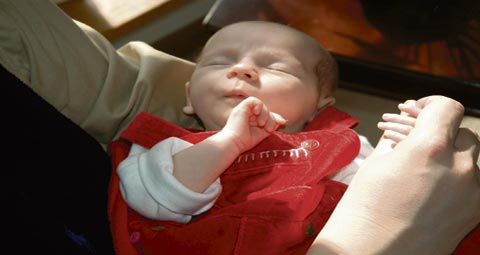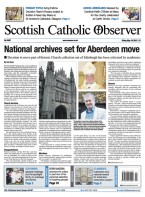April 8 | ![]() 0 COMMENTS
0 COMMENTS ![]() print
print

The Roots of Forgiveness
— RONALD ROLHESIER
In one of James Carroll’s early novels, he offers this poignant image: A young man is in the delivery room watching his wife give birth to their baby. The delivery is a difficult one and she is in danger of dying. As he stands watching, he is deeply conflicted: He loves his wife, is holding her hand, and is frantically praying that she does not die. Yet the impending birth of their child and the danger of his wife’s death conspire to make him acutely aware that, deep in his heart, he has not forgiven her for once being unfaithful to him. He has expressed his forgiveness to her but he realises now, at this moment of extreme crisis, that in his heart he still has not been able to let go of the hurt and that he has not truly forgiven her.
As his wife hovers between life and death, he sees in her face a great tension, a struggle to give birth to someone even as she desperately struggles not to die. Her agony accentuates the deeper lines in her face and he sees there a dual struggle, to give birth and to not die.
Seeing this, he is able to forgive her in his heart. What moves him is not simple pity but an empathy born of special insight. His wife’s struggle to give birth, while wrestling to stay alive, highlighted by the agony of her situation, is like a light shining on her whole life helping to explain everything, including her infidelity.
And it’s the same for all of us: The deepest instinct inside each of us is the instinct to stay alive, to not petrify, to not unravel, to struggle against every obstacle so as to stay alive. Closely tied to that is a congenital pressure, at every level of body and soul, to give birth, to perpetuate our own seed, to leave behind some child that’s ours, to create an artifact, to co-create something with God. That dual pressure ultimately undergirds most of everything we do, inchoately colouring our every motivation and forming the deep context out of which we act. It’s what invites us to virtue and tempts us to sin. The struggle to stay alive and to give birth is at the base of both our heroism and our infidelities.
And it shows in our faces. It shapes the deeper contours of our countenance. Our faces ultimately reveal who we are, both at the surface and at our depth.
That can be a frightening thought: It’s not consoling to know that, in the end, we cannot hide our pettiness, greed, lust, self-centeredness, anger, bitterness, nor even how dull and bland we are. It shows through, physically. As Jean-Paul Sartre once affirmed, we create our own faces and, after age 40, what we are underneath, our virtue and sin, begin to trump our genetic endowment in terms of what people see in our faces. People begin to see who we are. And it isn’t the fat cells or the wrinkles that are the most telling. Selfishness, conceit, and bitterness are no longer cute, after forty!
Oscar Wilde, in “A Picture of Dorian Gray”, makes this point very powerfully, His hero, Dorian, a young man of stunning good looks, has his portrait painted by a master artist who produces a masterpiece. Everyone is taken by its beauty. But, and this is the catch, the portrait is painted when Dorian is young, innocent, and of gentle and good heart. His face in the portrait is beautiful because of these qualities, not just because of his extraordinary good looks. This becomes clear later, when Wilde, in a twist that smacks of something between magic and a bargain with the devil, has the portrait of Dorian’s face change so that as Dorian grows vain, lustful, arrogant, and cruel, the painting changes and begins to show his vanity, lust, arrogance, and cruelty. Dorian hides the painting and only occasionally, in either a fit of remorse or of utter cynicism, looks at it. And he sees in his changing face the state of his soul.
And this is true for all of us. Our changing faces reveal the state of our souls. But this is not as frightening as it may seem. Unless through long years of dishonesty we have so perverted ourselves so as to commit what the Gospels call the unforgiveable sin against the Holy Spirit, our deepest beauty-lines remain intact. Beneath our aging genetics, beneath our fat cells and wrinkles, beneath the greed and self-preoccupation that sin has painted into our faces, beneath the bitterness put there by every rejection we’ve endured, beneath the facade that tries to hide our weaknesses and infidelities, and underneath even our virtues and quiet martyrdom, there lies the tension that James Carroll’s young man saw in his wife as she struggled to give birth to their child even as she struggled not to die.
That struggle forms the deepest contour of the human face. Seeing it can give birth to forgiveness.











